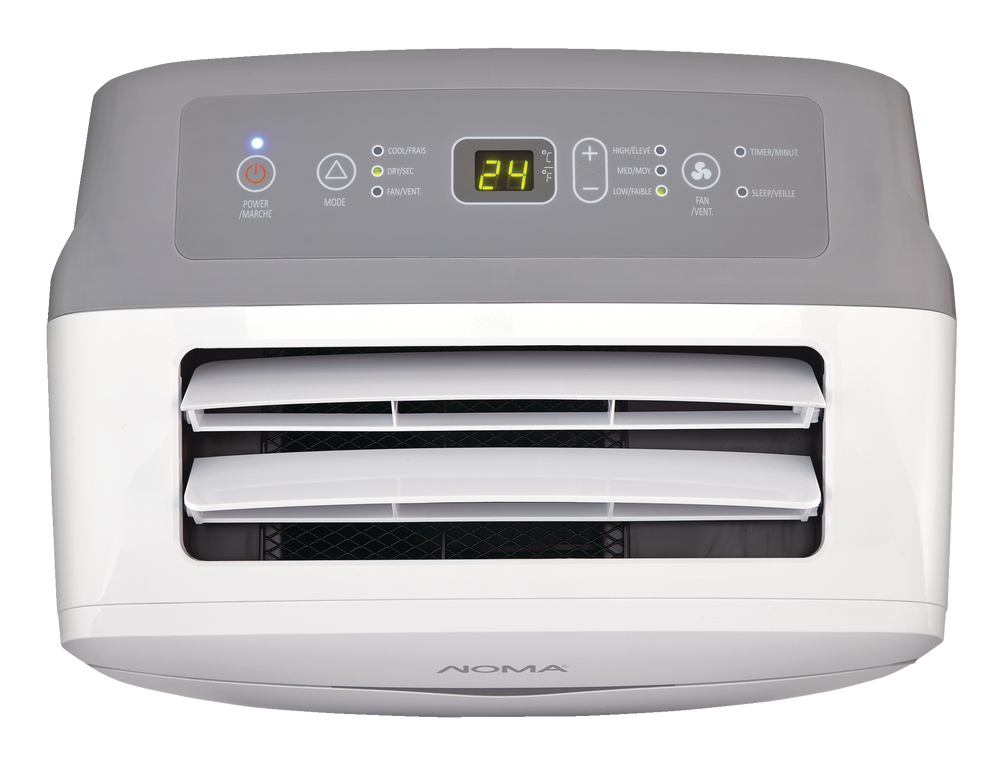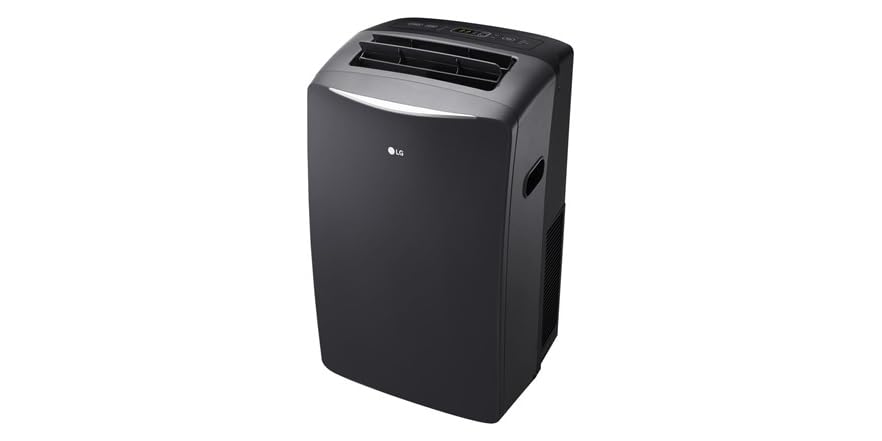Best 14 000 Btu Portable Air Conditioner

One of the most frustrating issues homeowners face, especially during sweltering summers, is a portable air conditioner that *simply isn't cooling* as effectively as it should. You've got a powerful 14,000 BTU unit, but the room remains stubbornly warm. Before you resign yourself to discomfort or shell out for a new AC, let's troubleshoot the problem systematically. This guide will help you diagnose common issues and attempt simple fixes yourself. Remember, safety first! If at any point you feel uncomfortable or unsure, call a qualified HVAC technician.
Diagnosing the Cooling Conundrum: A Step-by-Step Guide
We'll break down the diagnostic process into manageable steps, starting with the easiest and most common culprits.
Step 1: The Obvious Checks (No Tools Required)
These checks are crucial because surprisingly often, the solution is something simple overlooked.
- Power and Placement: Is the unit plugged in securely? Check the power cord for any visible damage. Is the outlet working? Test it with another appliance. Is the unit placed on a level surface? Uneven surfaces can affect performance. Also, ensure the unit has adequate clearance on all sides (usually at least 20 inches) for proper airflow.
- Air Filters: *This is the most common culprit*. A clogged air filter restricts airflow, forcing the AC to work harder and reducing its cooling capacity. Remove the filter (refer to your unit's manual for location) and inspect it. If it's visibly dirty, wash it with mild soap and water, or vacuum it thoroughly. Allow it to dry completely before replacing it. Dirty filters can also lead to ice buildup.
- Exhaust Hose: Is the exhaust hose properly connected to both the AC unit and the window adapter? Are there any kinks or obstructions in the hose? Ensure the hose is as straight and short as possible. Longer or bent hoses significantly reduce cooling efficiency. Check the window adapter – is it properly sealed? Gaps allow hot air to leak back into the room, negating the cooling effect. Use weather stripping or tape to seal any gaps.
- Room Size: Is the 14,000 BTU unit appropriately sized for the room you're trying to cool? Overly large rooms will overwhelm the AC's capacity. As a general rule, 14,000 BTU is suitable for rooms up to 700 square feet.
- Heat Sources: Are there excessive heat sources in the room? Direct sunlight through windows, a running oven, or multiple computers can overwhelm even a powerful AC. Close curtains or blinds during the hottest parts of the day.
- Thermostat Setting: This seems obvious, but double-check! Ensure the thermostat is set to a cool enough temperature, and that the unit is in "Cool" mode, not "Fan" or "Dry".
Action: Perform all these checks. Clean or replace the air filter if necessary. Straighten the exhaust hose and seal any window gaps. Wait an hour and see if the cooling improves.
Step 2: More In-Depth Checks (Requires Basic Tools)
If the obvious checks haven't solved the problem, these steps require minimal tools and a bit more attention to detail.
- Coil Inspection: Unplug the unit before proceeding! Remove the outer casing (refer to your unit's manual for instructions – typically involves removing screws). Inspect the cooling coils (usually behind the air filter). Are they covered in dust or debris? Use a soft brush or vacuum cleaner with a brush attachment to gently clean the coils. Be careful not to damage the delicate fins. Dirty coils impede heat transfer.
- Condensate Drain: Most portable ACs have a condensate drain to remove water that condenses during operation. Check the drain plug or hose. Is it blocked or kinked? A blocked drain can cause the AC to shut down or reduce cooling. Some units have a water level sensor that triggers a shut-off if the tank is full. Empty the tank if applicable.
- Airflow Check: With the unit running (after reassembling the casing), feel the airflow coming out of the vents. Is it strong and cool? Weak airflow indicates a potential blockage or fan issue. Also, check the airflow around the compressor (usually located in the back of the unit). Restricted airflow here can cause overheating.
- Voltage Check (Requires a Multimeter - use with caution!): *This step requires caution and some electrical knowledge.* If you are comfortable using a multimeter, check the voltage at the outlet while the AC is running. The voltage should be within the range specified by the manufacturer (usually 110-120V in North America). Low voltage can reduce the AC's performance. If the voltage is consistently low, consult an electrician about the wiring in your home. If you are uncomfortable using a multimeter, skip this step and consult a professional.
Action: Clean the coils, check the condensate drain, and verify adequate airflow. If you're comfortable and competent, check the voltage at the outlet. Wait another hour and see if the cooling improves.
Step 3: Investigating Potential Ice Buildup
Ice forming on the coils prevents proper cooling. There are two main reasons why this might occur.
- Low Refrigerant: While less common in newer portable units, a refrigerant leak can cause ice to form. This is a problem that requires professional attention. There is no DIY fix for refrigerant leaks.
- Restricted Airflow (Again!): Even if you cleaned the filter earlier, double-check it, and inspect the coils again. If the airflow is still restricted, even after cleaning, there may be a more serious blockage within the unit that requires professional cleaning.
Action: Turn off the AC and let the ice melt completely (this may take several hours). Ensure the air filter is clean and there are no obstructions to airflow. If the ice returns quickly after restarting the unit, call an HVAC technician to check for refrigerant leaks or other internal problems.
Step 4: Examining the Fan Motor and Compressor
These components are the heart of the AC unit, and problems here often require professional expertise.
- Fan Motor: Listen carefully to the fan motor while the unit is running. Does it sound noisy or strained? Is the fan spinning freely? If the motor is struggling or the fan is not spinning properly, it may need to be replaced. This is generally a job for a qualified technician.
- Compressor: The compressor is responsible for circulating the refrigerant. If it's failing, the AC won't cool properly. Signs of a failing compressor include:
- Unusual noises (grinding, clicking).
- The unit cycles on and off frequently.
- The unit draws excessive power.
Action: If you suspect a problem with the fan motor or compressor, contact an HVAC technician immediately.
When to Call a Professional
It's crucial to know when a problem is beyond your DIY capabilities. Here's a summary of situations where you should call a qualified HVAC technician:
- Refrigerant Leaks: As mentioned earlier, any suspected refrigerant leak requires professional attention. Refrigerant is harmful to the environment, and handling it requires specialized equipment and certification.
- Compressor Issues: Compressor repairs are complex and potentially dangerous. Don't attempt them yourself.
- Electrical Problems: If you suspect an electrical problem within the unit (e.g., short circuit, faulty wiring), immediately unplug the unit and call an electrician or HVAC technician.
- Complex Disassembly: If you need to disassemble the unit beyond removing the outer casing to access the coils or filter, it's best to consult a professional. You could accidentally damage other components.
- Unresolved Issues: If you've tried all the troubleshooting steps above and the AC still isn't cooling properly, there may be a more serious underlying problem that requires professional diagnosis and repair.
Preventive Maintenance for Your 14,000 BTU Portable AC
The best way to avoid cooling problems is to perform regular preventive maintenance.
- Clean the Air Filter Regularly: At least once a month, or more often if you live in a dusty environment.
- Clean the Coils Periodically: At least once a year, or more often if you notice dust buildup.
- Inspect the Exhaust Hose: Check for kinks or damage regularly.
- Empty the Condensate Drain: As needed, to prevent water buildup.
- Store the Unit Properly: When not in use, store the unit in a cool, dry place, covered to protect it from dust.
- Consider Professional Servicing: Every few years, consider having a qualified HVAC technician inspect and service your portable AC to ensure it's running efficiently and safely.
By following these troubleshooting steps and performing regular maintenance, you can keep your 14,000 BTU portable air conditioner running smoothly and efficiently for years to come. Remember, safety is paramount. When in doubt, always consult a professional.










